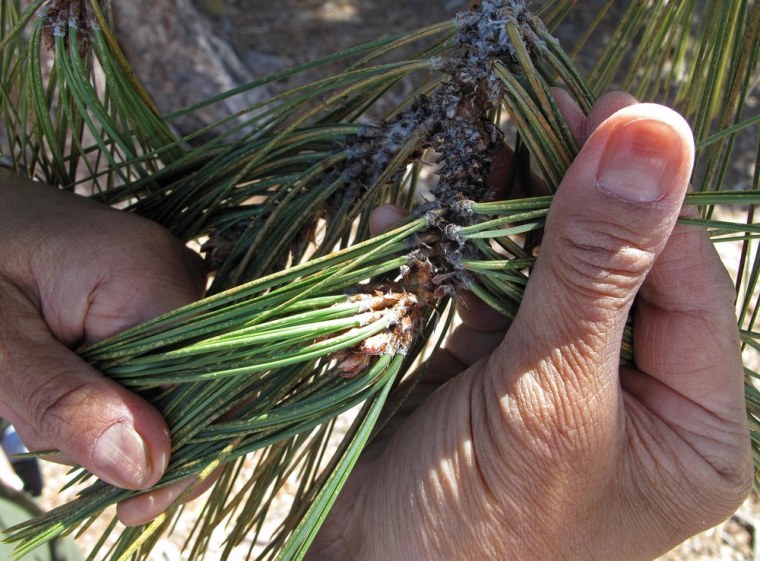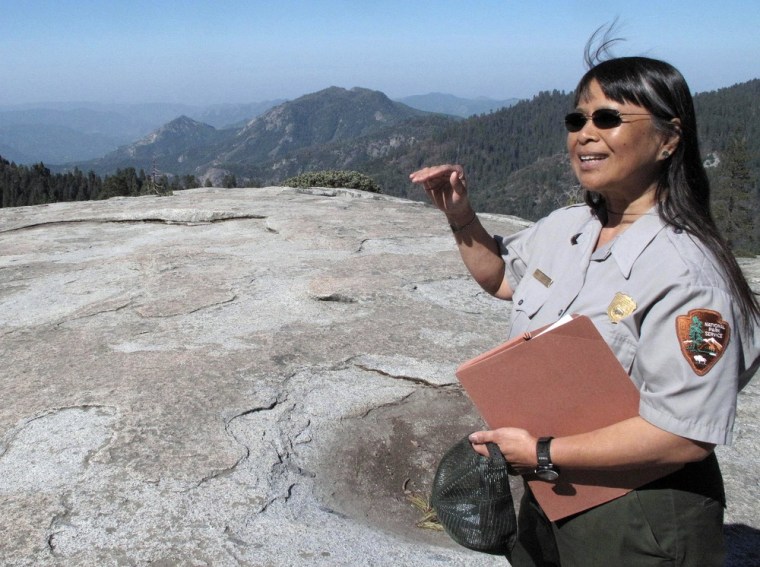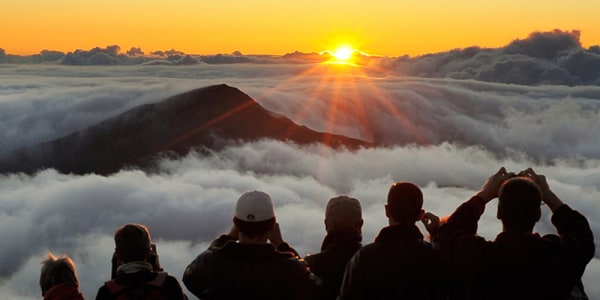On a clear day, the view from Beetle Rock in Sequoia National Park extends west for 105 miles across the patchwork of crops in California's agricultural heartland to the Coast Mountains and the Pacific Ocean beyond.
The problem is there are few clear days, even at 6,200 feet.
The Sierra Nevada forest that is home to the biggest and oldest living things on earth — the giant Sequoia redwoods — also suffers a dubious distinction. It has the worst air pollution of any national park in the country.
Mountaintops that should offer awe-inspiring views of California's geologic grandeur often are muddled by a disorienting gray soup of smog.
"Ozone levels here are comparable to urban settings such as L.A.," said Emily Schrepf of the nonprofit advocacy group the National Parks Conservation Association as she beheld the diminished view. "It's just not right."
This is not the place to take in a whiff of fresh mountain air. Smog is so bad that signs in visitors centers caution guests when it's not safe to hike. The government employment website warns job applicants that the workplace is unhealthy. And park workers are schooled every year on the lung and heart damage the pollution can cause.
Ozone also is to blame for weakening many stands of the park's Jeffrey and ponderosa pines, leaving telltale yellowing of their long needles. Instead of absorbing carbon dioxide, they soak up ozone through the stoma in their needles, which inhibits photosynthesis. Ozone also stresses young redwood seedlings, which already face challenges to survival.
Although weakened trees are more susceptible to drought and pests, the long-term impact on the pines and on the giant redwoods that have been around for 3,000 years and more is unclear.
Slideshow 28 photos
America's national parks
"It's not a great story to tell, but it's an important story to tell because you can look at us as being the proverbial canary in a coalmine," said Annie Esperanza, a park scientist who has studied air quality there for 30 years. "If this is happening in a national park that isn't even close to an urban area, what do you think is happening in your backyard?"
It's a problem in a handful of the nation's 52 parks that are monitored constantly for ozone, including Joshua Tree National Park in California's Mojave Desert and North Carolina's Great Smoky Mountains National Park, which is ringed by power plants and several major highways including Interstate 40, a major tractor-trailer shipping route. But none is in the ballpark with Sequoia and its neighbor, Kings Canyon.
Under the Clean Air Act, the region that encompasses Sequoia and Kings Canyon national parks has been designated a "Class 1 air shed," which means by 2064 it must have pure air with no degradation of visibility. But that apparently didn't take into consideration its proximity to one of the worst air quality basins in the country.
"It does take visitors by surprise," Esperanza said. "On a day it's unhealthy, we ask people if you're going to do a rigorous hike, we recommend early morning. It's limiting, it's quite telling, and it's very sad."
While forest fires create some pollution, the lion's share comes from the San Joaquin Valley, the expanse of farmland that is home to the California's two busiest north-south trucking highways, diesel freight train corridors, 1.7 million dairy cows, food processing plants and tens of thousands of diesel tractors plowing dusty fields. Its trough shape traps pollutants, and high-pressure systems act like a lid on a pot.

Smog is created when the sun's rays hit pollutants such as oxides of nitrogen and volatile organic compounds that are in motor vehicle exhaust, solvents, pesticides, gasoline vapors and decaying dairy manure.
"There is no simple answer to ozone pollution," said Thomas Cahill, a researcher at the University of California, Davis who studies air problem in Sequoia and across California.
Breathing ozone at high levels for even a short time can blister the lungs like UV rays blisters skin, scientists agree. The problem in quantifying exposure levels, however, is that some people suffer pulmonary damage at lower doses than others.
Dr. David Lighthall, health science adviser for the San Joaquin Valley Air Pollution Control District, says ozone levels at high altitudes don't drop at night like they do in the valley, which leads to "more cumulative exposure for those who live and work there."
Southerly breezes from the San Francisco Bay collect pollutants and push them to the valley's southern rim, where they bounce back north. Between Fresno and Visalia — just below the park — the warm air hits the cooler air pushing south and gets trapped in a swirling vortex called the Fresno Eddy. The warm, polluted air then rises up the canyons of three rivers that begin in the park.
The only way to improve air in the park is to improve the San Joaquin air basin, something that so far has proved elusive given the myriad sources. Even with hundreds of millions of dollars spent to retrofit diesel engines and replace gasoline lawnmowers with electric ones, residents pay a federal fine for the region's failure to meet even minimal EPA ozone limits.
"We don't create a disproportionate amount of pollution; it's just that we have these natural challenges so that the pollution we do create can take literally weeks or months to clean out. It just builds up over time," said Jaime Holt, spokeswoman for the valley air district.
Already this year, the level of ozone in Sequoia park has exceeded federal health standards, even though it's early in the summer ozone season. During the June-to-September summer season last year, the park violated the National Ambient Air Quality standard at least 87 times, compared with 56 at Joshua Tree and 12 at Great Smoky Mountains.
"It's tragic that the National Park Service is known for clean air, and then you see a sign saying it's unhealthy to breathe," Esperanza said. "It's so contrary to the national parks idea."

